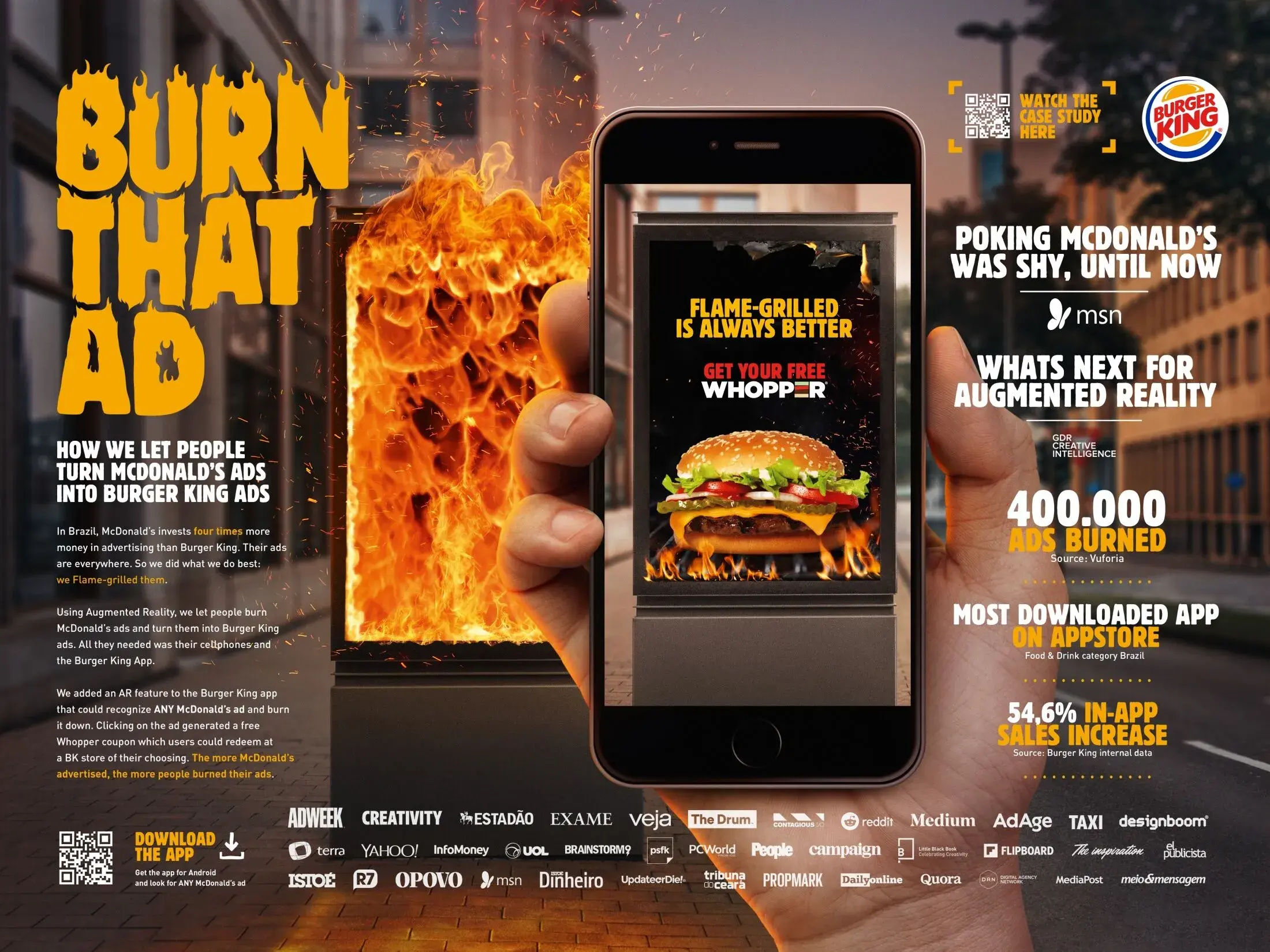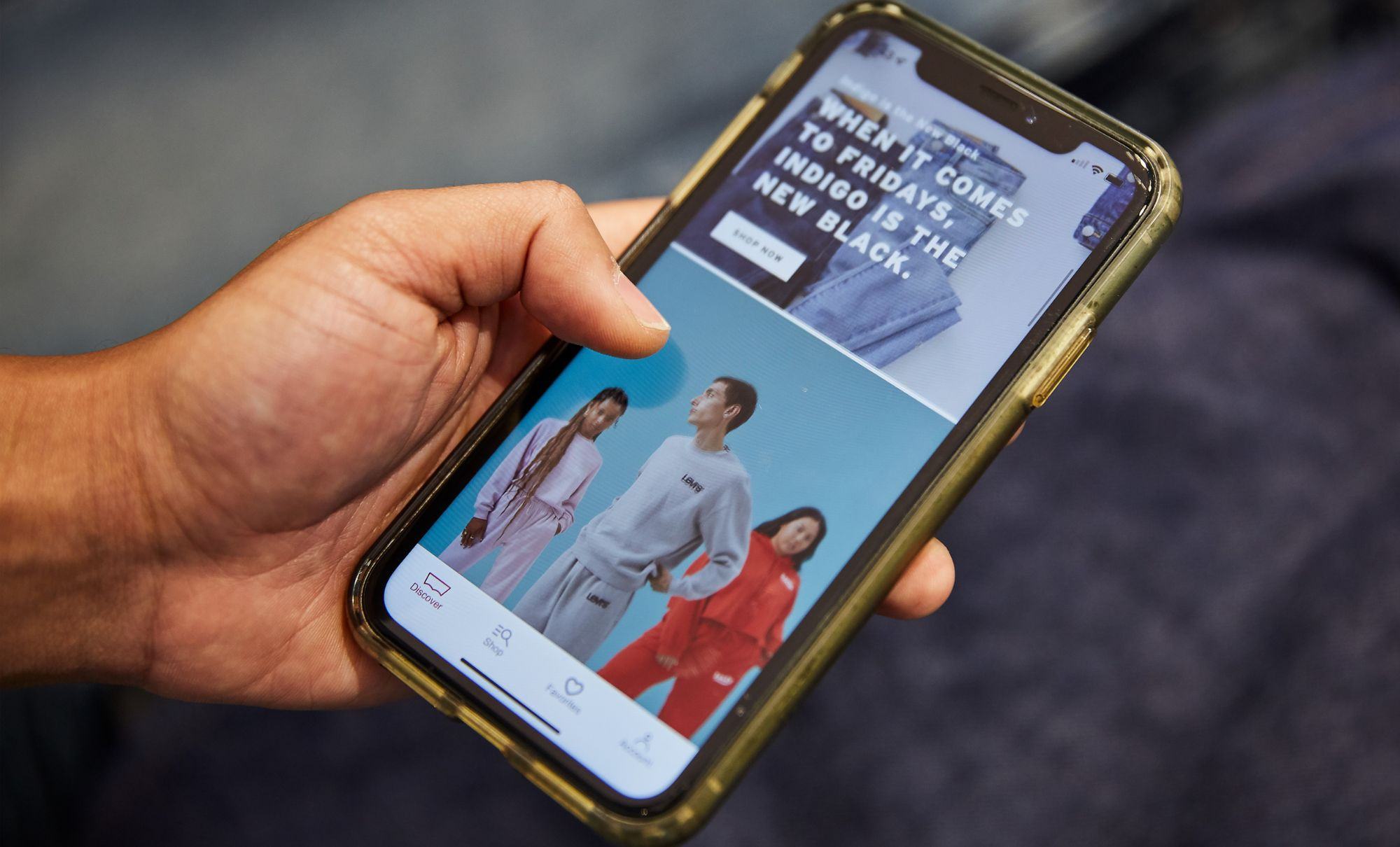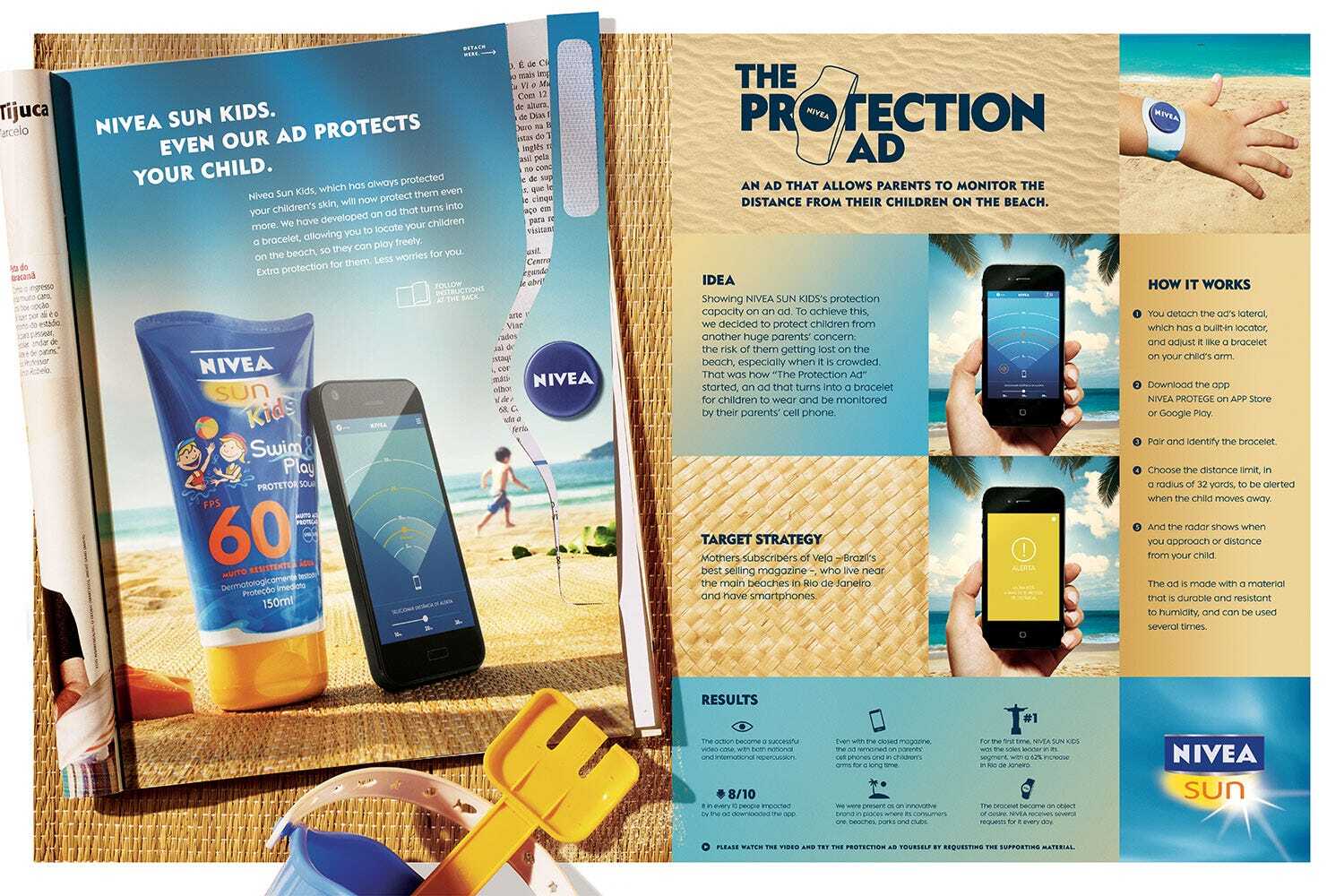The smartphone and mobile app boom has turned in-app advertising into the rockstar of the marketing world. The in-app advertising era began in the mid to late 2000s. Advertisers quickly recognized the immense potential of reaching a broad audience through applications, leading to a surge in in-app ad spending. If we look ahead, the in-app advertising market appears poised for substantial growth, with a projected annual growth rate of 10.1% anticipated between 2023 and 2027. This trajectory will lead to the market reaching USD 462.3 billion by 2027.
When it comes to picking the best stage for advertising acts, gaming, and applications have taken center stage for many business areas and targeted groups. These applications boast substantial user bases and offer fertile ground for precision-targeted advertising efforts, making them the preferred choice for businesses aiming to maximize the effectiveness of their ads within the app ecosystem.
But before we go into a more detailed look at in-app advertising, let’s touch it and see what it is. In-app advertising is digital ads shown to users within mobile apps, helping advertisers reach their target audience while users use the app. For app owners, it’s a chance to make money and cover app development costs, even offering the app for free in some cases. Advertisers can use various ad formats like banners, interstitials, and videos, with advanced options like rich media and playable ads. Users may also interact with ads for rewards, like in-game currency or discounts, boosting app monetization for publishers.
Table of Contents
In-App Ad Market in Numbers
The popularity and effectiveness of in-app ads stem from their ability to deliver targeted, engaging, and measurable advertising experiences within the context of apps where users are already active and engaged. This combination of factors has made in-app advertising a valuable tool for marketers and app developers.
Let’s dig deeper and watch numbers that give us more ideas about in-app advertising. Thanks to The Brain Insider for collecting these:
- In 2022, the global In-app Advertising market reached a valuation of USD 135.92 billion.
- The Asia Pacific region emerged as the largest market, contributing 37.32% of the total market revenue in the same year.
- According to a 2021 study, spending on mobile advertising reached approximately USD 341.18 billion, accounting for roughly 40% of the overall advertising expenditure.
- The application segment encompasses entertainment, social media, gaming, online shopping, news, and other categories. The entertainment segment held the dominant market share, representing approximately 25.47% in 2022.
- In terms of ad types, the market is segmented into banner ads, interstitial ads, rich media ads, video ads, and native ads. Banner ads claimed the largest market share, accounting for approximately 38.45% in 2022.
- We categorize the market into Android, iOS, and other platforms. In the year 2022, Android held the lion’s market share at around 67.66%.
The mobile app market is experiencing remarkable growth, fueled by increasing in-app usage and a substantial boost in advertising budgets. This upward trend indicates no deceleration, and the in-app advertising sector continues to progress astonishingly.
Types of In-App Advertising
Mastering the art of advertising is a vital ingredient for captivating users and maximizing your app’s financial potential. To navigate the rich landscape of in-app advertising, let’s explore some of the most impactful formats at your disposal.
Banner ads
Banner ads, those rectangular visuals that grace the top or bottom of your app screen, typically maintain a static presence, although some may add a dash of animation or interaction. Positioned in less obtrusive zones, such as the bottom of the screen, they offer a gentler approach to advertising. Nevertheless, their unobtrusiveness can lead to a drawback: while they may not capture users’ attention as effectively as other ad formats, they often slip unnoticed.
Video ads
They take on various forms, including pre-roll ads that precede the app’s content, mid-roll ads that seamlessly blend into the app’s flow, or post-roll ads that wrap up the user experience. Video ads wield immense engagement power, often boasting impressive click-through and conversion rates. Nevertheless, their production can involve a more substantial investment, and the risk of temporarily interrupting the user’s experience is a factor to consider.
Rich Media
Rich Media represents a versatile category within digital advertising, encompassing ads that incorporate various multimedia elements, including video, audio, and animation. These dynamic ads elevate engagement levels beyond what conventional banners or text-based advertisements can achieve because they offer a broader canvas for creativity. Rich media is a potent means of connecting with audiences, owing to its diverse advertising possibilities. For instance, rich media ads can seamlessly incorporate videos, a feature not accessible to basic text-based ads.
Native ads
Native ads seamlessly integrate into the app’s user interface, skillfully camouflaging themselves as an organic part of its content. This artful blending results in a highly engaging ad format that consistently garners impressive click-through rates while preserving a positive user experience. Native ads come in various guises, such as sponsored posts, recommended content, or in-feed ads, each carefully designed to harmonize with the app’s overall aesthetic and user journey. However, this harmonious integration into the app’s ecosystem demands more creative effort to ensure a seamless match with the app’s design and user experience. Yet, the investment pays off handsomely, as native ads bridge the gap between advertising and content consumption naturally and appealingly to users.
Playable ads
Playable ads allow users to engage with the ad content before installing or purchasing the associated application. These ads cleverly emulate the actual gameplay experience of the app, granting users a chance to explore and experience the application’s features firsthand, thus aiding in their decision-making process. Playable ads are renowned for their exceptional user engagement and possess the capability to achieve remarkable conversion rates. Nevertheless, it’s important to note that crafting playable ads necessitates a more substantial investment of effort, as they must faithfully replicate the unique gameplay characteristics of the app they promote.
Rewarded Ads
Rewarded advertisements offer users a delightful proposition – they provide valuable incentives like virtual currency, additional lives, or access to premium features, all in exchange for the simple act of watching an advertisement. These ads captivate user attention and have the remarkable potential to enhance user retention and bolster revenue streams. Nonetheless, it’s worth noting that the successful implementation of rewarded ads demands a thoughtful approach, as they must strike a detailed balance to ensure users are enticed rather than overwhelmed by the advertising experience.
Strategically integrating these diverse in-app advertising formats can unlock your mobile application’s user engagement, retention, and revenue generation potential. Each format brings its distinct strengths and considerations to the table, making selecting the right blend, tailored to your app’s target audience and objectives, an essential recipe for success.
Examples of In-App Advertising
Innovative and creative advertising strategies have taken center stage, captivating audiences and redefining how brands connect with consumers. Next, we’ll explore some remarkable examples of in-app advertising that pushed the boundaries of technology and imagination.
Burger King made an ingenious real-time marketing campaign dubbed “Burn That Ad.” Through this initiative, smartphone users had the opportunity to engage with the Burger King mobile app, utilizing its augmented reality scanner to burn down their competitors’ advertisements virtually. The reward for their participation? A complimentary Whopper! This creative fusion of technology and fun captivated customers, allowing them to experience the thrill of AR while Burger King cleverly leveraged their rivals’ advertising efforts to their advantage.

In promoting the Gorillaz gang’s latest album, the creative minds behind the band harnessed the power of mobile technology, augmented reality, and geolocation. Their innovative app unveiled a treasure trove of over 500 virtual “Gorillaz House” locations where devoted fans could immerse themselves in the sounds of the new album, “Humanz.” This app seamlessly bridged two worlds: the virtual realm of the band and the tangible world inhabited by their fans. Within this digital domain, each user had the privilege of accessing exclusive content curated by the group, delving into untold stories, and even partaking in a virtual concert experience. The Gorillaz’s album promotion campaign garnered the prestigious Golden Lion at the Cannes Festival.
Levi’s has embraced a non-intrusive approach to advertising, focusing on opt-in and geo-targeted ads. This jeans brand has fostered a strong connection with mobile users by delivering a personalized advertising experience targeting Boost Mobile customers.
They achieved this by implementing a subscription-based strategy and employing precise geographic targeting. Under this initiative, Boost Mobile users could lower their monthly bills by downloading an app that provided them with geo-targeted advertisements. Leveraging advanced geo-technology, Levi’s strategically targeted users within specific geographic locations, presenting localized advertisements to these individuals.

In a clever marketing move, the Nivea brand introduced detachable bracelets in Brazilian magazines. Parents were encouraged to fasten these bracelets around their children’s wrists and install the Nivea Protects app. This innovative application then monitored the child’s whereabouts and triggered an alert if they strayed too far. The results were astounding, with Nivea experiencing a remarkable 62% surge in sales in Rio de Janeiro as a direct outcome of this advertising campaign. Subsequent research revealed that the ad deeply impacted 8 out of 10 individuals and downloaded the app. Therefore, it should come as no surprise that this exceptional mobile marketing endeavor earned the brand a prestigious Grand Prix award at the Cannes Lions International Festival of Creativity within the Mobile category.

Advantages of In-app Advertising
One of the main advantages of in-app advertising lies in its vast potential for reaching a global audience. Billions of individuals across the globe dedicate a substantial portion of their daily lives to mobile apps, with the average user investing an impressive 3 hours and 46 minutes glued to their smartphones in 2023. In this digital landscape, akin to the pivotal role played by ads on social media platforms, in-app advertisements are a vital conduit for businesses and marketers to engage with consumers within the mobile realm. The rationale behind this preference spans several compelling factors.
- In-app advertising offers advertisers a powerful tool for targeting specific demographics, interests, behaviors, and user characteristics. This precision ensures their advertisements reach an engaged and suitable audience, resulting in higher conversion rates and an improved return on investment.
- In-app ads are crafted to be less intrusive and more tailored to the user, increasing the likelihood of user actions such as clicks or downloads. Consequently, this can translate into boosted sales and revenue for advertisers.
- In-app advertising supports various rich media formats, including interactive videos, banners, and playable ads. These dynamic formats capture users’ attention and convey messages more engagingly than static ads.
- Seamless integration into the user experience minimizes disruption, setting it apart from traditional website display ads. When executed correctly, in-app ads seamlessly blend with the app’s content, enhancing user engagement and reducing ad fatigue.
In-App Advertising Pricing Models
The payment structure of in-app advertising operates when the user clicks on the ad. This entails advertisers remitting fees for each impression, click, or conversion generated. Determining the precise cost of in-app advertising can be intricate, given the multitude of ad formats, pricing models, and various influencing factors. Selecting a pricing model to guide all your strategic decisions is imperative to orchestrate a triumphant advertising campaign.
The CPM model
CPM, short for Cost Per Mille, signifies the fee advertisers allocate to publishers for every 1,000 times their ad graces a viewer’s screen. Calculate this metric using the formula: CPM = (total campaign cost/number of impressions) x 1000.
On the positive side, CPM offers a budget-friendly option compared to alternative advertising models. However, it’s essential to note that it doesn’t come with guarantees, no assurance that merely displaying the ad will lead to clicks or conversions. For those aiming to boost their brand’s visibility, CPM is a recommended choice, as it aligns well with this specific goal.
The CPC model
The CPC (Cost Per Click) pricing model operates on the principle that advertisers only incur costs when their ad garners a click. Calculate the CPC using the following formula: CPC = total campaign spend/number of clicks.
One of the distinct advantages of CPC is that advertisers are charged solely for genuine expressions of interest, exemplified by clicks on their ads. However, it’s essential to be mindful of the potential downside: some clicks may be accidental or lack genuine intent, resulting in expenditures without corresponding benefits.
This model is worth using when your advertising objective revolves around driving traffic to your app, and you have a predetermined budget. This model aligns well to efficiently allocate resources for targeted user engagement.
The CPA model
The CPA (Cost Per Action) pricing model revolves around a precise concept: advertisers remit payment to the publisher exclusively when a click culminates in a predetermined action within an app, such as a user registration or a purchase. The CPA formula looks as follows: CPA = total campaign spend/number of times the specified action was successfully completed.
One of the significant merits of CPA lies in its low-risk, performance-driven approach, ideal for situations where you have a clearly defined action in mind. Nevertheless, it’s important to acknowledge potential limitations. Scaling campaigns under CPA can be a challenge, and while performance metrics are crucial, it’s equally vital not to neglect other aspects, such as building brand awareness.
We recommend using CPA when you want users to take a specific action, whether it involves making a purchase or completing a registration. This pricing model excels in aligning advertising expenses with tangible user actions, ensuring efficient resource allocation for your targeted objectives.
The CPI model
The Cost Per Install (CPI) payment model charges the advertiser only when a user’s action leads to installing their app. The formula for calculating CPI is simple: the total amount spent on a campaign divided by the number of app installations it generates.
There are some notable advantages to using CPI as your payment model. If your target audience is specific and niche, you will only incur charges for users who genuinely express interest in your app by installing it. However, there are also some drawbacks to consider. CPI doesn’t provide insights into whether users remain engaged with your app or continue to use it over time. Additionally, you should exercise caution with lower-cost installs, as they might attract users of lower value or even result in fraudulent installations.
CPI is worth using when your primary objective is boosting the number of app installations or promoting and distributing your apps to a broad and diverse audience.
The CPV model
The CPV (Cost Per View) model specifically tailors to the format, where advertisers pay when a user actively watches their video for a predetermined duration. You can calculate CPV as the total campaign cost divided by the number of video views generated.
One of the notable advantages of CPV is its cost-effectiveness, ensuring that you only incur charges when individuals demonstrate genuine interest in your video content, as opposed to accidental or brief views. However, it’s essential to consider certain caveats, such as platform-dependent cost variations, where targeting a niche audience may be pricier. This situation may lead to uninterested users allowing your ads to play without engagement, resulting in expenses without commensurate returns.
CPV is a great choice when your primary objectives center around building engagement or driving sales rather than increasing brand awareness. This pricing model aligns well with goals prioritizing meaningful user interactions and tangible outcomes.
Why In-App Advertising Beats Mobile Website Advertising
In-app and mobile website advertising has its own advantages, and the choice between them depends on various factors, including your marketing goals, target audience, and budget. Here are some reasons why in-app advertising can be more effective than mobile website advertising in certain situations:
- Mobile app usage typically surpasses mobile websites, resulting in heightened user engagement, increased click-through rates, and improved interaction with in-app advertisements.
- In mobile websites, the prevalence of ad-blocking software poses a considerable challenge, hindering the effective delivery of traditional display ads to users. Conversely, in-app ads face fewer obstacles and are more likely to reach their intended audience.
- In-app advertising offers a treasure trove of valuable information due to its opt-in nature. It empowers advertisers to harness data such as the user’s device type, GPS location, age, gender, wireless carrier, and more.
- In-app advertising platforms often offer more robust tracking and measurement capabilities, allowing advertisers to gain deeper insights into user interactions, conversion rates, and other performance metrics. This wealth of information empowers advertisers to refine their campaigns for superior outcomes.
- While most websites rely on cookies for tracking, apps employ device IDs. Notably, most device IDs remain effective for a generous 21-month period, a striking contrast to the 24-hour lifespan of cookies on mobile websites. This means that in-app opt-ins endure more than 600 times longer than typical mobile website cookies, providing advertisers a lasting advantage in connecting with their audience.
In summary, the choice between in-app and mobile website advertising depends on factors like marketing goals, target audience, and budget. In certain situations, in-app advertising can be more effective due to higher user engagement, fewer ad-blocking challenges, access to valuable user data, advanced tracking capabilities, and longer-lasting opt-ins than mobile website cookies.
Mobile In-App Advertising Best Practices
You might still be pondering how to make the most effective use of your budget. By adhering to best practices, you can rest assured that users will enjoy the optimal experience while maximizing your return on marketing investment.
Choose the suitable ad formats
This principle is universally applicable to all forms of advertising, but it holds particular significance in the context of in-app advertising. If you’re promoting an app, consider crafting a playable creative. For awareness campaigns, banners are the way to go, and if you aim to drive more clicks, a rewind format could be your best bet. The key to success lies in aligning the ad format with your specific objectives – it’s all about ensuring that the format perfectly serves your goals.
Invest in Quality Creative
The realm of in-app advertising stands as one of the most challenging arenas for creative endeavors. To effectively captivate your audience, you must seize their attention with compelling messages and striking imagery. Consequently, your advertising should strike a balance between vibrancy and clarity, ensuring that it’s not only visually engaging but also readily comprehensible. Incorporating a clear and compelling call to action is the key to encouraging user engagement and prompting them to click on the ad.
Check and Recheck App Quality
Adapting your approach based on your chosen platform is essential when embarking on an in-app advertising campaign. One vital strategy involves crafting tools to circumvent malicious and subpar applications. Consider implementing measures such as whitelists and blacklists to steer clear of low-quality publishers and ensure your campaign’s success.
Our tech staff and AdOps are formed by the best AdTech and MarTech industry specialists with 10+ years of proven track record! 
Track, Test, Analyze and Tweak
In in-app advertising, you have a distinct advantage compared to, for instance, CTV, as it grants you access to a wealth of rich analytics and data. Husting this valuable resource to fine-tune your campaigns and drive improved outcomes is crucial. Consider conducting rigorous testing across various elements such as placements, formats, headlines, body copy, and images. Remember that this isn’t a one-off endeavor because constant testing and optimization are the keys to sustained success.
Time your promotions with your app’s content
When promoting your app through in-app advertising, leveraging in-game events and promotions is the most potent approach. These moments offer the perfect opportunity to channel many users into your app, exposing them to fresh content or exciting campaigns maximizing your outreach and engagement.
Key Takeaways
- Rising In-App Advertising Market. The in-app advertising market is on the verge of substantial growth, with a projected annual growth rate of 10.1% expected between 2023 and 2027, reaching USD 462.3 billion by 2027.
- Preferred Platforms. In-app advertising thrives in gaming and mobile applications due to their large user bases and precision-targeted advertising potential.
- In-App Advertising Definition. In-app advertising refers to digital ads displayed to users within mobile apps, offering advertisers a way to reach their target audience while users engage with the app. App owners can monetize their apps through various ad formats.
- In-App Advertising Popularity. In-app ads are favored for their ability to deliver targeted, engaging, and measurable advertising experiences within active app contexts, making them a valuable tool for marketers and app developers.
- Market Insights. Notable statistics about the in-app advertising market include its valuation at USD 135.92 billion in 2022, the Asia Pacific region contributing 37.32% of market revenue, and mobile advertising accounting for approximately 40% of overall ad expenditure in 2021.
- Ad Formats. In-app advertising encompasses various formats such as banner ads, video ads, rich media, native ads, playable ads, and rewarded ads, each with strengths and considerations.
- Advantages. In-app advertising offers precise targeting, revenue generation for app developers, user-friendly ads, support for rich media formats, and seamless integration into the user experience.
- Pricing Models. Various pricing models include CPM (Cost Per Mille), CPC (Cost Per Click), CPA (Cost Per Action), CPI (Cost Per Install), and CPV (Cost Per View), each catering to specific campaign goals.
- In-App vs. Mobile Website Advertising. In-app advertising surpasses mobile website advertising in terms of user engagement, ad-blocking challenges, data availability, tracking capabilities, and the durability of user opt-ins.
- Best Practices. Critical recommendations for successful in-app advertising include selecting suitable ad formats, investing in quality creative, ensuring app quality, continuous tracking and testing, and timing promotions with app content for maximum user engagement.

